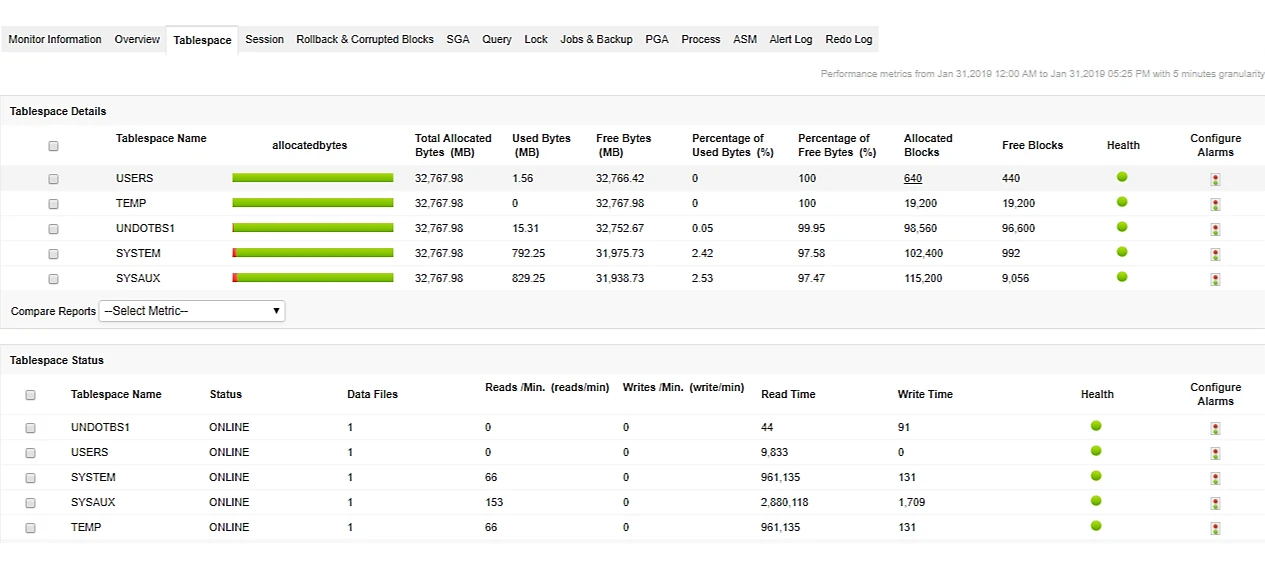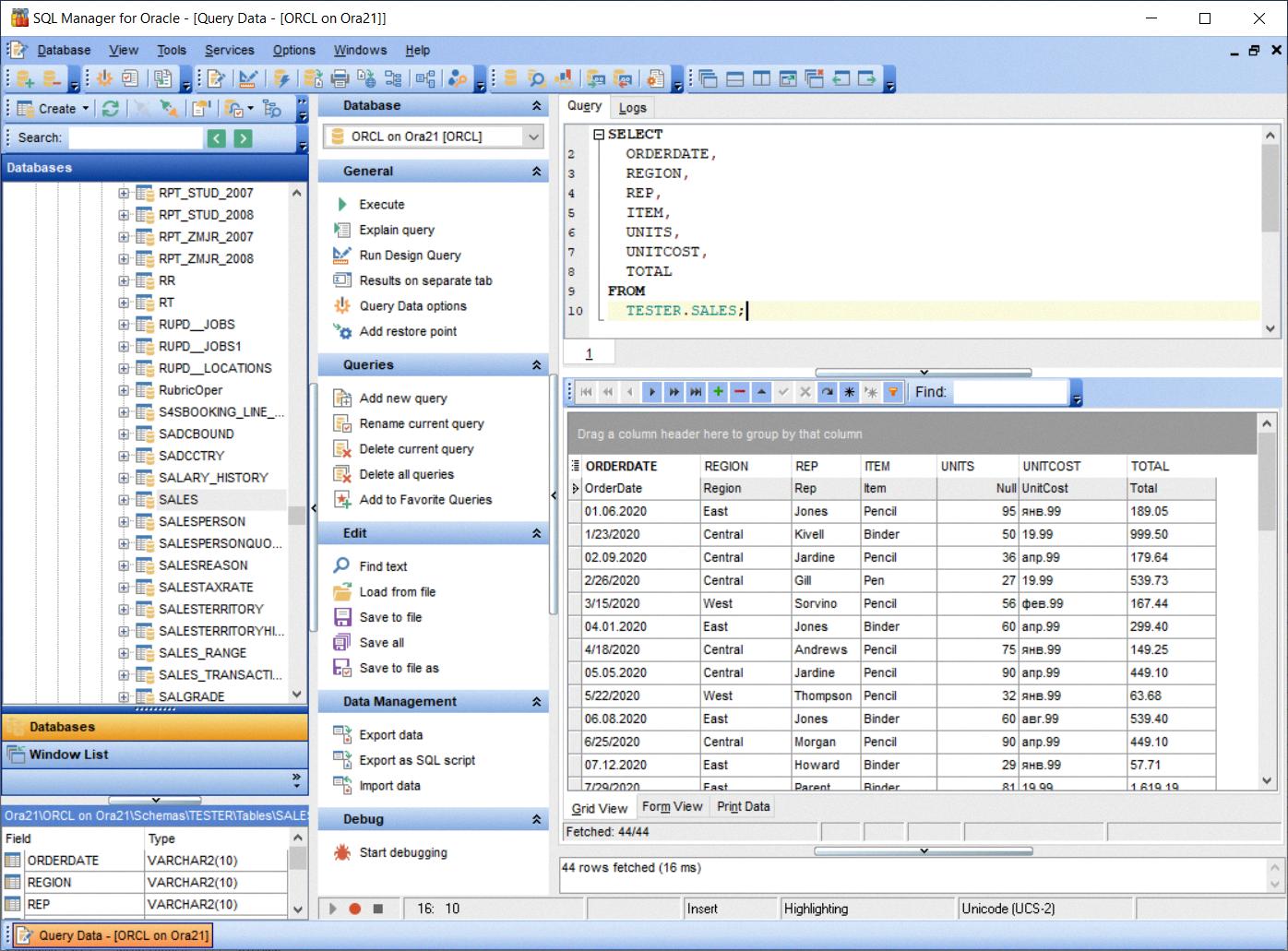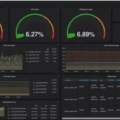Oracle Database Monitoring is an essential tool for any database administrator. It provides a way to monitor the health and performance of your Oracle database, ensuring optimum performance and stability. With Oracle Database Monitoring, you can proactively identify potential problems before they have a chance to affect your database and take action to prevent them from occurring.
Oracle Database Monitoring consists of two main components: metrics and alarms. Metrics allow administrators to monitor the vital signs related to database health, such as memory usage, CPU utilization, and disk I/O activity. Alarms provide proactive notifications when critical thresholds are exceeded or when particular conditions occur, such as a large query taking longer than expected or an unusually high amount of disk I/O activity.
The Oracle graphical user interface for DBA tools provides a convenient way to view these metrics and set up alarms for your Oracle databases. On the Database Home Page, click Administration and then click Monitor. From here you can access the Top SQL page which shows you the top SQL statements by execution time or other specified criteria. You can also view session information, locks and waits for records, I/O activity details, and more.
Oracle Database Monitoring is an invaluable tool in ensuring that your databases are running efficiently and effectively at all times. With it, you can be sure that any potential issues are identified quickly so they can be addressed before they cause any major disruptions to your business operations.

Monitoring Oracle Databases
Oracle Cloud Infrastructure Monitoring is an automated service that provides visibility into the performance and usage of your cloud resources. It allows you to actively and passively monitor your cloud resources, set alarms to notify you when critical thresholds are reached, and access metrics to track trends over time.
Active monitoring involves automatically collecting metrics from Oracle Cloud Infrastructure services as well as custom metrics from external sources. These metrics can be used to determine performance trends over time and identify potential issues before they become a problem.
Passive monitoring is the ability to set alarms based on specific conditions or thresholds. This allows you to proactively be alerted when a certain metric exceeds expectations or key resources drop below threshold levels. Alarms can be configured to send notifications by email, SMS, PagerDuty, and other services.
By using Oracle Cloud Infrastructure Monitoring, you can gain insight into how your cloud environment is performing and take proactive steps to ensure optimal performance and reliability.
Monitoring Oracle Database Activity
To monitor Oracle database activity, you can use the Database Monitor feature on the Oracle Database Home Page. On the Database Home Page, click Administration and then click Monitor. On the Database Monitor page, click Top SQL to view the current top-performing SQL statements. You can also choose to change the statistic used to determine the statements that are the top SQL statements by selecting from the Top By list and clicking Go. This will provide you with an up-to-date overview of your database activity and help you track performance changes over time.
Performance Monitoring in Oracle
Performance monitoring in Oracle is a process of proactively monitoring the health and performance of your database. This process helps you identify any issues that could affect your database’s performance and reliability. The metrics used to monitor performance include CPU utilization, memory usage, disk I/O, and database wait for events. The Oracle Database continuously monitors these metrics and workloads, allowing it to quickly identify any potential issues or areas that need improvement. By tracking these metrics regularly, you can gain insight into your system’s performance, recognize problems before they become serious, and take the necessary steps to optimize your database’s performance.
Monitoring Databases
Database monitoring is the process of tracking and analyzing the activity of a database over time. It helps to identify potential performance issues, anticipate future problems, and ensure that the data stored in the database is safe and secure. To effectively monitor a database, there are several best practices to follow:
1. Monitor slow queries: Keep track of all queries that take longer than expected to execute. This will help you identify any potential bottlenecks in your system and determine how they can be addressed.
2. Keep track of schema updates: Regularly review and update your database schema to ensure that it’s optimized for performance. This may involve changing column types or adding indexes to existing tables.
3. Use Database Logging: Set up logging on your database so that you can track changes made over time and review any errors or warnings issued by the system.
4. Measure Key Metrics: Regularly measure key metrics such as response times, query optimization, server load, memory usage, disk space utilization, etc., so that you can quickly identify any potential issues with your database performance before they become serious problems.
5. Monitor Security Settings: Regularly review security settings such as user permissions and access control lists to ensure that only authorized users have access to sensitive data within your database system.
6. Analyze Performance Trends: Analyze trends in performance over time by reviewing past query logs and other metrics so that you can identify recurring issues and proactively address them before they become a problem for users or customers using your system.
The Benefits of Using a DB Monitoring Tool
A Database Monitoring Tool (DBM) is a software program that helps administrators monitor and manage their databases. It collects performance data from the database and presents it in an easy-to-read format, allowing administrators to quickly identify any issues that may be affecting the performance of their database. DBM can also provide metrics such as latency, throughput, resource utilization, and query response times for various databases. The tool can also be used to alert administrators to any potential problems with their databases or applications. Additionally, DBM can help administrators troubleshoot and optimize their databases for better performance.
Monitoring Database Activity
To check database activity, you can use Microsoft SQL Server’s Activity Monitor. This tool allows you to view and monitor current database activity, including database connections, lock information, and query execution statistics. You can access Activity Monitor from the Object Explorer in SQL Server Management Studio. Once you’ve opened the Object Explorer, select the “Activity Monitor” tab to view real-time data about your database. The data provided includes the queries running on your system, as well as their execution plans and execution times. From here, you can also track active sessions, and locks held by each session, and take action to terminate processes if needed.
Monitoring SQL Databases
SQL monitoring is the process of continuously collecting and analyzing usage, performance, and event metrics for Microsoft SQL Server. It involves collecting data from both the server and the application that use it, giving you a comprehensive view of your entire data estate. This allows you to make informed decisions about how best to optimize performance for your applications. SQL monitoring helps ensure that your applications run smoothly and efficiently, providing reliable access to data when needed. It also helps identify any potential issues before they become a problem, such as database bottlenecks or security risks.

Source: sqlmanager.net
Conclusion
In conclusion, Oracle monitoring is an invaluable tool for any database administrator. It provides a powerful graphical user interface that allows you to actively and passively monitor your cloud resources. It can proactively monitor the health and performance of your database, analyze workloads, and identify any issues that need attention. With its comprehensive metrics and alarm features, Oracle Cloud Infrastructure Monitoring service makes it easy to keep your database running smoothly and efficiently.








